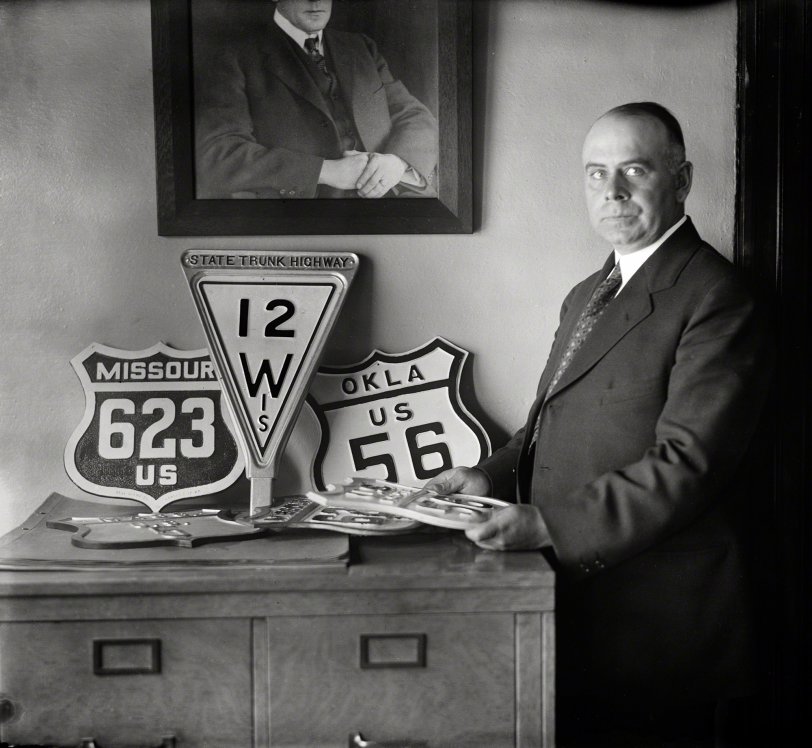


Framed or unframed, desk size to sofa size, printed by us in Arizona and Alabama since 2007. Explore now.
Shorpy is funded by you. Patreon contributors get an ad-free experience.
Learn more.

- Freeze Frame
- Texas Flyer wanted
- Just a Year Too Soon
- WWII -- Replacing men with women at the railroad crossing.
- Yes, Icing
- You kids drive me nuts!
- NOT An Easy Job
- I wonder
- Just add window boxes
- Icing Platform?
- Indiana Harbor Belt abides
- Freezing haze
- Corrections (for those who care)
- C&NW at Nelson
- Fallen Flags
- A dangerous job made worse
- Water Stop
- Passenger trains have right of way over freights?
- Coal
- Never ceases to amaze me.
- Still chuggin' (in model form)
- Great shot
- Westerly Breeze
- For the men, a trapeze
- Tickled
- Sense of loneliness ...
- 2 cents
- Charm City
- What an Outrage
- Brighton Park
Print Emporium
Routes: 1925

The conferees representing the highway commissions of several States, who met in this city during the present week under the auspices of the Joint Board of State and Federal Highways, reached a wise decision when they agreed to create a group of interstate roads to be known as United States highways . . .
-- Washington Post editorial, April 25, 1925
Washington, D.C., 1925. "No caption (man with highway signs)." Early waypoints on the road to uniform route designations and the standardization of highway signs. Harris & Ewing Collection glass negative. View full size.
Phantom Roads
Those signs are test examples, you won't find US 56 or US 623 in the early route plans. US 56 was also used in early sign examples as being in Maine, not Oklahoma as seen here. The upright black-faced US 623 bears marks from the "Best Stamp Company" of Kansas City, MO - a maker of stamped metal objects like badges. The company may have been the victim of arson in 1957. Both of the US 623 variants have the US on the bottom, aping the design of the Wisconsin shield. Of historical note: The US 56 sign in his hands reads "US Route 56", text not used on the signs in the field. Also on the table is Mass US 5, which was used and is still in use today.
Get your kicks...
on Route 56. No, wait, it'll come to me...
The Man
This must be Thomas MacDonald, chief and later commissioner of the Bureau of Public Roads. Much of today's Interstate system and its standards were the result of MacDonald's work during the early part of the 20th Century.
Read in a book ("The Big Roads" by Earl Swift) he commanded such respect, even at a young age he demanded his younger siblings call him "Sir".
There is another scene from this photo shoot at the FHWA's website:
http://www.fhwa.dot.gov/infrastructure/firing.cfm
Some interesting info on "The Chief" as well.
Wikipedia entry here: http://en.wikipedia.org/wiki/Thomas_Harris_MacDonald
























On Shorpy:
Today’s Top 5